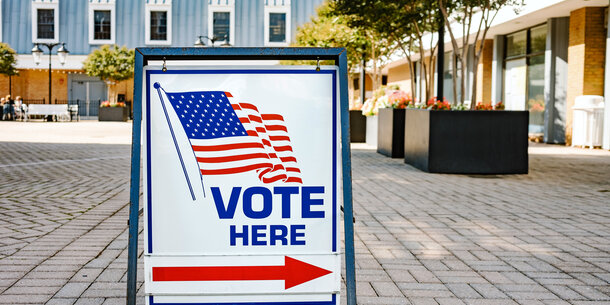This piece first appeared in the National Urban League’s 2022 State of Black America report.
Today in America, the right to vote is under assault. Following a presidential election in which voters of color turned out in record numbers, state legislatures rushed to pass an unprecedented wave of laws last year restricting access to voting. Sadly, this assault on our democracy, which shows no sign of letting up, has become increasingly partisan. The most restrictive laws were passed on straight party-line votes by Republican-led legislatures. And in the U.S. Congress, where laws protecting voting rights had enjoyed bipartisan support since the 1960s, legislation pushing back on state restrictions has stalled without a single Republican supporter.
But there is one reform that in recent years has bucked these alarming trends, uniting voters across party lines to expand access to the ballot: the restoration of voting rights to people with convictions.
In just the last four years, 12 states and Washington, D.C., have taken action to restore voting rights to people that had previously been barred from voting due to a felony conviction. Seven of these states, along with D.C., did so through legislation. And while most of the legislatures responsible for passing these bills had Democratic majorities, a Louisiana bill restoring voting rights passed out of a legislature dominated by Republicans in 2018. In two more states—Florida and California—voters themselves restored voting rights to their fellow citizens through ballot measures. The Florida measure passed with almost 65% of the vote, receiving a million votes more than any statewide candidate for office – a clear demonstration of bipartisan support. In the last three states—Iowa, Kentucky, and Virginia—state governors took executive action to expand the franchise. Two of these governors were Democratic, and the third (Kim Reynolds of Iowa) is Republican.
It may come as a surprise to many that the issue of voting rights restoration for people with convictions is uniting the parties. In fact, it may surprise many to learn that people with convictions are disenfranchised in the first place. But it’s true.
Forty-eight states disenfranchise people convicted of felonies while they are incarcerated (Maine, Vermont, and D.C. are the exceptions). And in many states, disenfranchisement continues even after people are released from prison. As a result, approximately 5.2 million people were disenfranchised nationwide due to a conviction in 2020, and most of them—almost 3.9 million—were not incarcerated. Moreover, the effects of these laws are not felt equally. For example, Black adults are disenfranchised at a rate 3.7 times higher than non-Black adults.
This disparate impact on Black citizens is not an accident. The practice of criminal disenfranchisement dates back centuries. Still, in many states, the modern laws have their roots in late-19th and early-20th century attempts to evade the mandate of the 15th Amendment and continue to deny Black men the right to vote. After emancipation, some states passed laws aimed at criminalizing Black people—sometimes called Black Codes—to essentially continue the institution of slavery. Linking the right to vote to these racist criminal justice systems then became one of many ways these states limited the political power of newly free citizens. Moreover, disenfranchisement was permanent in many states—any felony conviction led to a lifetime ban from the polls.
This shameful history may partly explain why, in the 21st century, restoring the vote to people with convictions enjoys bipartisan support. So-called “felony disenfranchisement” laws are anathema to modern conceptions of both democracy and criminal justice. They also conflict with a nearly universal principle: forgiveness. The vast majority of people convicted of a felony return to their communities, and it is in everyone’s best interest that they are welcomed back, given a second chance, and encouraged to reintegrate in a productive way. Disenfranchisement does the opposite: it tells them they are unwelcome, that they do not have a full stake in their communities; that they are second-class citizens. It tells them their voices do not matter.
When rights restoration is framed in these terms, voters across the political spectrum support the reform. People of all faiths believe in forgiveness. Law enforcement and correctional officers support restoring voting rights because it serves the goal of healthy reintegration and rehabilitation. Survivors of crime support it for the same reason.
It was this widespread support, generated by an appeal to these universal principles, that drove the most significant of all the recent state laws restoring voting rights to passage in Florida in 2018. Florida was responsible for almost a quarter of the nation’s disenfranchised voters. An estimated 1.7 million Floridians were disenfranchised as a result of a conviction. One out of every 5 Black adults in the state could not vote. But in 2018, the Second Chances Florida campaign drove more than 5 million voters to the polls to vote for Amendment 4, which put an end to that state’s lifetime ban on voting for everyone convicted of a felony. It was thought that 1.4 million Floridians would get their right to vote back.
Unfortunately, Florida also provides an example of how much work there is yet to do to restore voting rights to people living in their communities. Just months after Amendment 4 was passed by Florida’s voters, the Florida Legislature passed a law that severely limited its impact by requiring people with convictions to pay off in full their fines, fees, and restitution before they can vote. More than 770,000 voters were disenfranchised based on debt alone after the law passed, and the overwhelming majority were unable to afford what they owed. And as before, the law produces discriminatory results. Black Floridians were both more likely to owe debts and to owe more than their white counterparts.
Still, there has been tremendous progress on voting rights restoration in the last few years. And there is reason to hope that the progress will continue. As of January 14, 2022, there were already 20 bills that would restore voting rights pending in seven state legislatures. Moreover, as our country becomes more and more bitterly divided over voting rights, voting rights restoration provides one example of what is possible when the debate is centered on universally held principles, not partisan politics.



